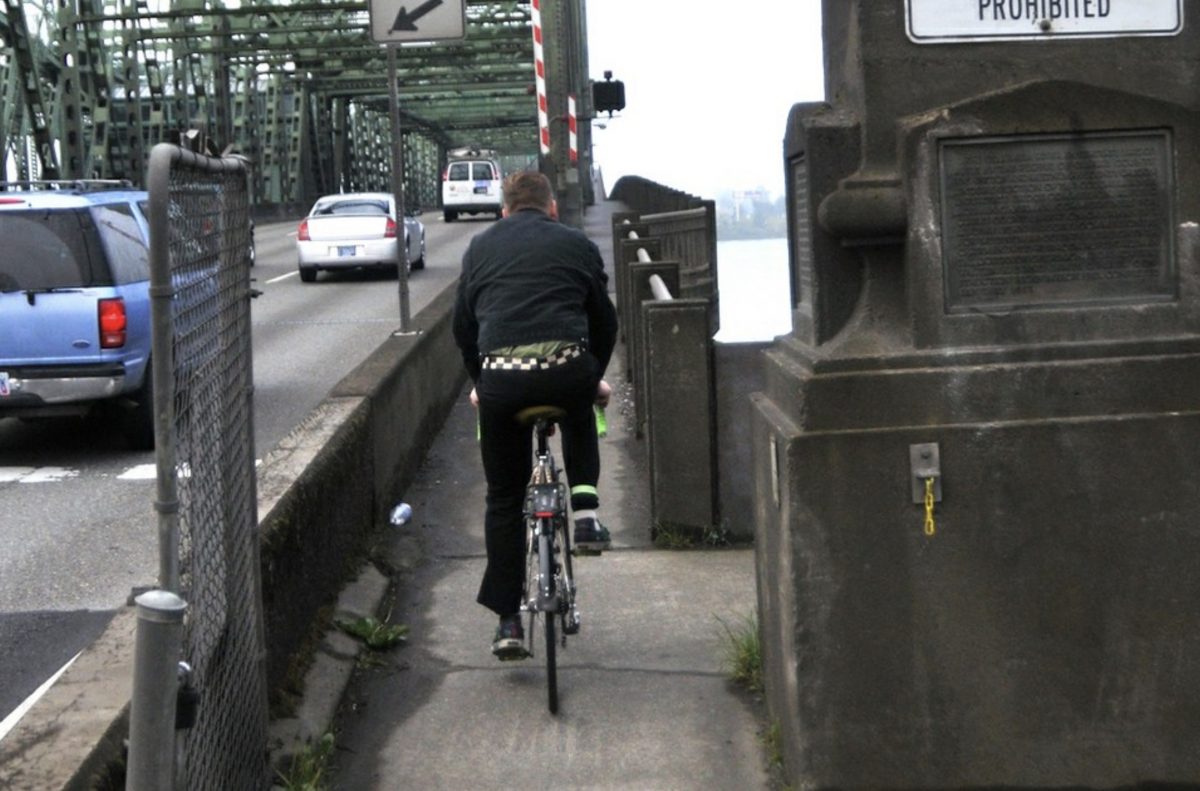
(Photo: Jonathan Maus/BikePortland)
Wednesday was the first-ever meeting of the I-5 Bridge Replacement program Community Advisory Group (CAG).

Along with an equity-focused group and the executive steering committee, the CAG will play a key role in providing feedback to project managers, and agency staff from both the Washington and Oregon departments of transportation.
And yes, this is the same group project leaders felt did not need any representation from cycling-specific organizations. It’s got trade and commerce folks, business leaders, two trucking/freight representatives, and so on. But not one person who can speak with the authority of an institution and expertise of a membership base that cares solely on cycling.
How big of a problem that ends up being remains to be seen; but as of last night, the new leader of The Street Trust has put project staff on notice.
Advertisement
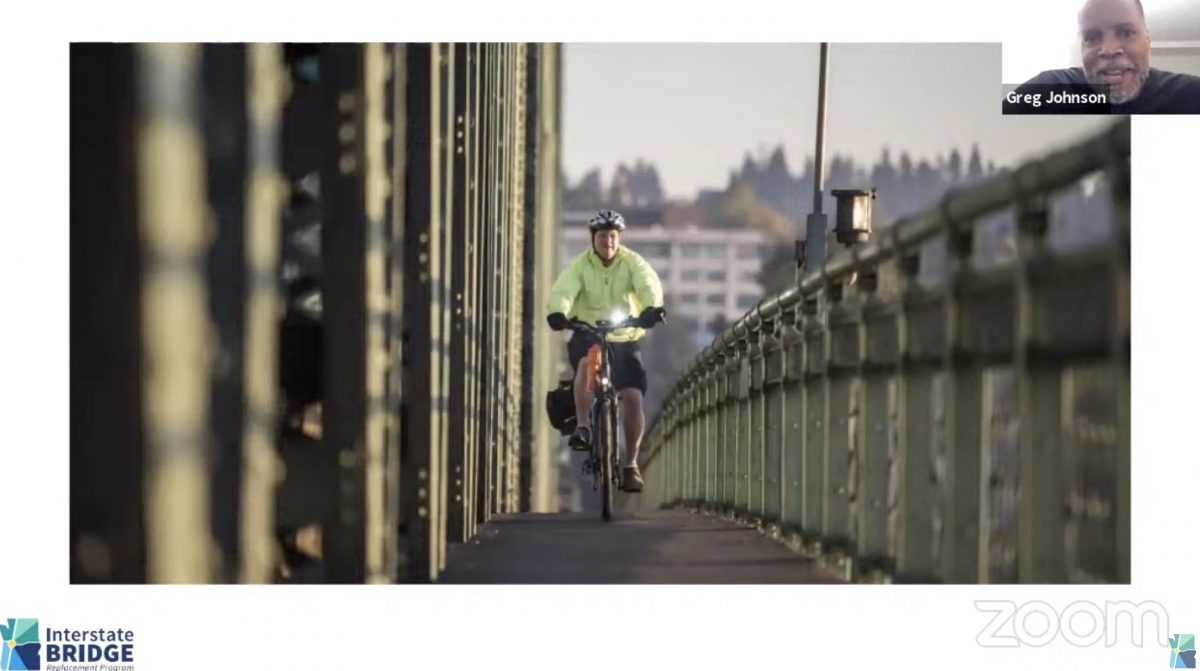
The person in charge of steering this project is IBR Program Administrator Greg Johnson. In an introduction to the project, he showed a slide of a bicycle rider on one of the bridge’s narrow paths (above). “Here you see a bike rider riding on a four-foot path,” Johnson said. “And as someone who has ridden bikes all my life, I refuse to ride my bike across this bridge.” Johnson then told a story about how, during a walking tour of the bridge, a bike rider approached his group. “I had to skinny myself up and slide between the structural members [of the bridge] to let the bicyclist go by unimpeded,” he shared. “This is not how modern non-motorized transportation should look.”
Then Johnson posed a question to the CAG: “What does a modern bicycle or walking or rolling facility look like going across this river?”
Sarah Iannarone, the former (two-time) mayoral candidate who was hired as interim executive director at nonprofit The Street Trust earlier this month, wonders how the committee can answer that question.
Advertisement

(Photo: Jonathan Maus/BikePortland)
Since she’s not on the committee, Iannarone was relegated to a one-minute public speaking slot after the two-hour meeting. Despite having no bike-centric nonprofit on the committee, despite the history of The Street Trust as Oregon’s oldest bicycling advocacy group (they were founded in 1990), and despite Iannarone kindly warning meeting facilitators that she might go over her allotted time, Iannarone was sharply cut-off before she could finish her comment.
Here’s an excerpt from what she said:
“… I just wanted to point out that the future we’re trying to achieve tomorrow hinges on our investments today in a modern, high-capacity, regional transit system and neighborhood scale micro-mobility options such as bicycles, e-bikes, scooters and other micro-EVs. Given the [Oregon] Governor’s executive order, given these demands for future urban investments, I’m very confused why there are no dedicated cycling advocates from either side of the river at this table. In my professional opinion this is going to make it very difficult for your body to answer the question posed by director Johnson earlier in this meeting… [She was cut off here].. ‘What does a modern bicycle or rolling or walking facility look like?” in the context of this project.
To that end, I humbly request that you work to fill this gap on the committee by increasing the level of dedicated transit advocates at the table and ensuring that bicycling and micromobility advocates are explicitly represented as soon in this process as possible.”

(Photo: Screengrab from the meeting)
Unless IBR Program staff add Iannarone or some other bicycling group leader, the sole representative of a walking or bicycling organization for both states is Ashton Simpson, the new executive director of Oregon Walks.
Perhaps aware of his position, Simpson made a point to mention bicycling during his introductory remarks. “What I want to bring to this is a project that works for our entire transportation system; but also to think about what it looks like for pedestrians moving across that bridge in terms of biking and walking, because I think that that is going to be a very important piece to this project as well.”
Advertisement
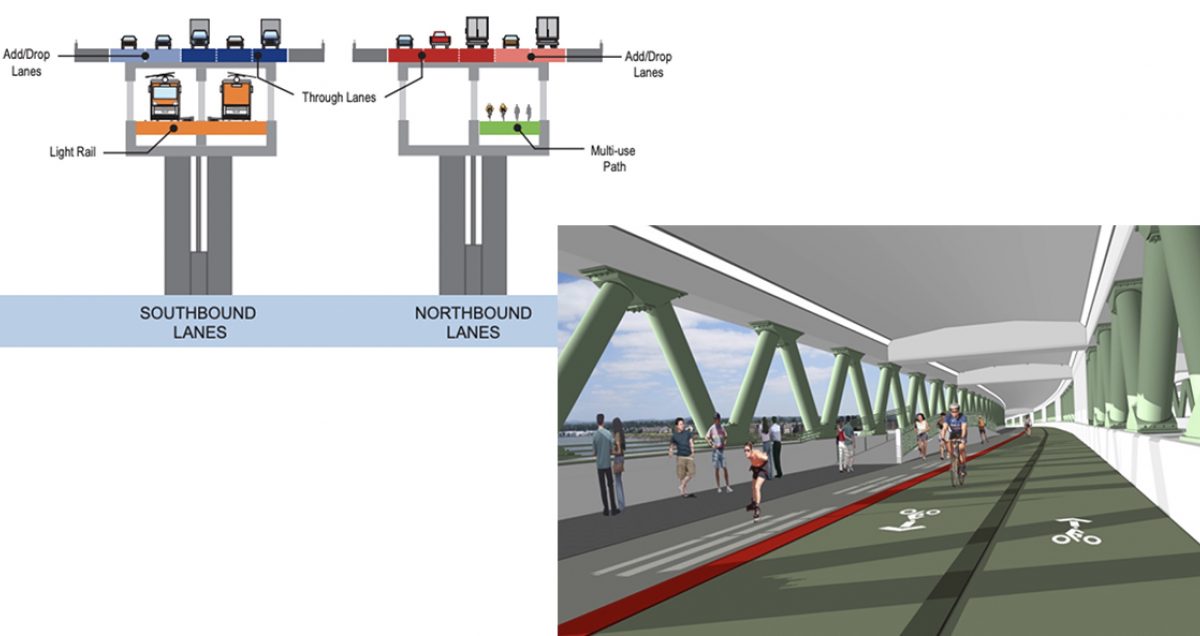
There’s reason to worry that bicycling designs will be bad. Last time around, the Columbia River Crossing (CRC) project had an entire committee devoted to bicycling and walking facilities and still came up with questionable designs. Toward the end of the process, two members of The Street Trust board said, “This CRC proposal, if it were ever to get built, would be a $4 billion mistake… the seven-mile project corridor lacks consistent bike-able paths and roadways, making this is a bike bridge to nowhere for cyclists.”
That comment touched on something many people overlook: That this project is about much more than just the bridge. At the meeting last night, Administrator Johnson acknowledged that the IBR Program encompasses a five-mile segment of the I-5 corridor that touches seven interchanges — further underscoring the need for robust bicycling insights.
If we spend several billions of dollars on this project (and that’s a huge “if” at this point), it must come with world-class, “modern” bicycling facilities. Given the amount of bicycling in Portland and Vancouver, and the potential of electric bikes and other small EVs, this project could result in a massive increase in the amount of people who don’t drive a car or truck over the river. Whether or not folks like Greg Johnson are among them is entirely up to him.
— Jonathan Maus: (503) 706-8804, @jonathan_maus on Twitter and jonathan@bikeportland.org
— Get our headlines delivered to your inbox.
— Support this independent community media outlet with a one-time contribution or monthly subscription.



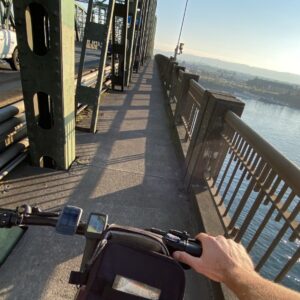
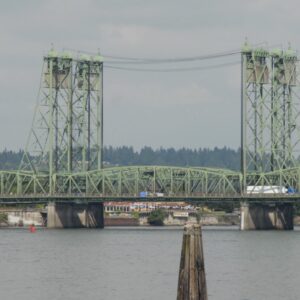

Thanks for reading.
BikePortland has served this community with independent community journalism since 2005. We rely on subscriptions from readers like you to survive. Your financial support is vital in keeping this valuable resource alive and well.
Please subscribe today to strengthen and expand our work.
“…a five-mile segment of the I-5 corridor that touches seven interchanges…”
That’s the heart of the problem. No width of pavement will fix it.
I’m a car driver too.
Half of the project cost is rebuilding interchanges, and Clark County folks have the gall to complain about the costs of light rail…
This is a capacity project. A bridge replacement would cost less than $1 billion. Add another $1 billion for light rail.
At the very least I should be able to safely cross the bridge with my toddler on the bike and not have to worry about damaging our hearing or worse, being killed by a stray driver. It ridiculous to go forward with this without representation from the cyclist community.
Agreed. The Cuomo bridge has transparent sound-dampening panels. If we want an answer to the bike infra question posed in the meeting, I think it looks fairly close to this.
My eye went to the photo at the top of the article first, then to the headline, which I initially misread as “What does a modern bicycle fatality look like?”.
As she should be cut off. I don’t care who you are, going over your allotted time in any presentation is one of the most disrespectful and selfish things it’s possible to do, regardless of context. As someone who almost has a PhD, Iannarone really has to know this by now, and yet she still chooses to persist with her holier-than-thou attitude.
I agree that a bike rep (or two or three) should be added to the committee. But Iannarone should definitely not be that person.
She might have gotten more time if she wasn’t publicly humiliating the panel. If the comment has value, then going over the time is acceptable. The time limit is in place to provide a trap door for time bandits. The panel should show discretion and allow a few extra seconds. Where beneficial.
Oh, c’mon – give Sarah a break. At least she’s trying to do the right thing, within a deeply flawed structure. Anyone who has spent any time in public meetings in Portland knows that they are largely window dressing to the more important backroom meetings where the real decisions are made.
“…one of the most disrespectful and selfish things it’s possible to do…”
Is going over your allotted time worse than operating a machine that releases poisonous waste into a resource that other people breathe or drink? Because it’s good to keep these things in perspective. Oddly enough nobody says a word when I start up my friend’s 26 year old car, pumping out carbon monoxide, benzene, oxides of nitrogen, partially combusted hydrocarbons–at least I didn’t waste anybody’s time!
The gall, Sarah. Who does she think she is, other than the person selected to guide and represent the major bike organization in the state? Did she expect to persist beyond her time?